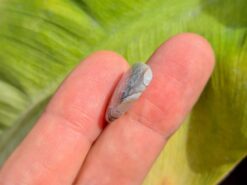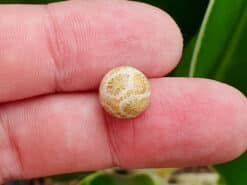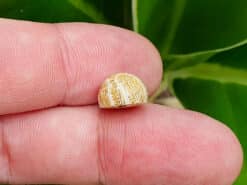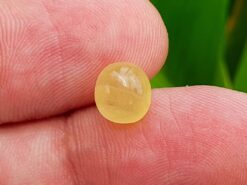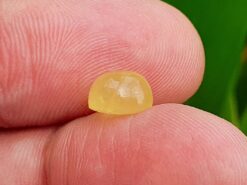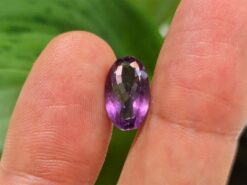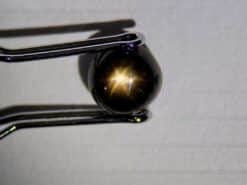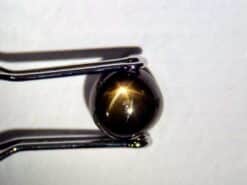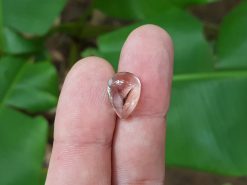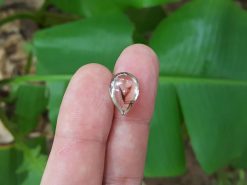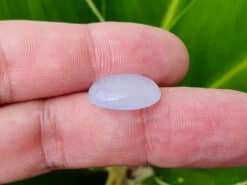Nephrite jade, from New Zealand

Buy natural gemstones in our shop
Nephrite jade
Introduction
Nephrite jade is a rock composed essentially of a variety of amphibole, actinote, with the chemical formula
Ca2(Mg, Fe)5Si8O22(OH)21. Along with jadeitite (composed of jadeite), it is one of the two primary rocks called “jade.” Because of its remarkable toughness and subtle sheen, nephrite jade is prized for ornamental use and appears in jewelry, decorative objects, ceremonial pieces, and more.
The name “nephrite” is derived from the Latin lapis nephriticus, itself a translation of the Spanish piedra de ijada. While this stone comes in a range of colors—from translucent white or faint yellow (sometimes referred to in China as “fat jade sheep”) to brownish or grayish white (called “jade bone chicken”) and all shades of green—it is best known for its vibrant to deep green hues.
Composition & Formation
Nephrite jade is primarily an aggregate of fibrous crystals, making it exceptionally tough compared to many other ornamental stones. The unique interlocking crystal structure contributes to its strong resistance against fractures, allowing ancient artisans to carve it into intricate shapes. Most varieties of nephrite jade form under regional metamorphic conditions, where heat and pressure transform the original rock into this dense, fibrous gem material.
Key deposits of nephrite jade are found worldwide, though Canada is currently one of the largest producers. Historically, notable sources include parts of China, New Zealand, and the Pacific coasts of North America. In many cultures, nephrite jade’s aesthetic value and durability made it a favored material for both ceremonial and everyday objects.
Color Variations & Appearance
When polished, nephrite jade displays a lustrous surface and often displays subtle variations in color. Some pieces may exhibit mottled or striated patterns of lighter and darker greens. While the most recognizable color is green, nephrite jade can appear in a spectrum ranging from creamy whites to deep greens. Certain pieces may even feature slight translucency, particularly at the edges.
Historical Significance
Nephrite jade’s long history of usage is evident in numerous ancient cultures. In Neolithic Europe and Southeast Asia, early societies crafted tools and religious or decorative items from this stone. On the coasts of North America, indigenous peoples incorporated nephrite jade into ceremonial and practical implements. Over centuries, this stone became symbolic of status, beauty, and cultural identity in various regions across the globe.
Prehistoric and Ancient China
In Neolithic China, nephrite jade came primarily from now-depleted deposits in the Ningshao area of the Yangtze Kiang Delta (during the Liangzhu culture, 3400–2250 BCE) and from parts of Liaoning Province and Inner Mongolia (Hongshan culture, 4700–2200 BCE). Historically, nephrite jade was used to create utilitarian objects and ceremonial pieces—from small interior decorations to intricately designed funeral costumes of the Han dynasty. It was revered as the “Imperial Stone,” signifying royalty and spiritual harmony.
From the earliest Chinese dynasties onward, jades were most intensively quarried around Khotan in the Xinjiang region. Veins of white and green nephrite jade were transported by rivers descending from the Kunlun Mountains to the Taklamakan Desert. Major river sites like the Yarkand, the Yurungkash (“White Jade River”), and the Karakash (“Black Jade River”) were key sources.
The Kingdom of Khotan, situated south of the Silk Road, paid annual tributes of white nephrite jades to the Chinese imperial court—more prized than gold or silver. Craftsmen at the court transformed these precious stones into exquisite objets d’art.
New Zealand
In New Zealand, nephrite is known by the Māori name pounamu, and it holds an important place in Māori culture. Regarded as a taonga (treasure), nephrite jade is protected by the Treaty of Waitangi, which imposes strict regulations on its collection and use. Traditionally, Māori artisans fashioned nephrite jade into various tools, weapons, and personal ornaments.
One famous Māori weapon is the mere, a type of short club carved from nephrite jade. Another notable item is the hei-tiki, a cherished necklace ornament passed down through generations or bestowed to mark significant occasions. Māori believed these items held mana (spiritual power), reflecting the stone’s enduring connection to ancestry and cultural identity.
The Māori name for the South Island, Te Wai Pounamu (“The Land of Greenstone Waters”), emphasizes the significance of nephrite jade to the island’s heritage. Although some local mining continues, a portion of the nephrite jade sold in New Zealand today actually originates from British Columbia, Canada, due to controlled and carefully managed extraction rights.
Use in Jewelry & Ornamentation
Because nephrite jade is remarkably tough and can be polished to a gleaming finish, it remains a popular choice for modern jewelry. Traditional designs often incorporate cultural motifs, reflecting the stone’s legacy of symbolism. Contemporary pieces may feature sleek, minimalist lines to highlight nephrite jade’s natural beauty and color variations. Whether set in rings, necklaces, bracelets, or decorative carvings, nephrite jade continues to captivate collectors and enthusiasts worldwide.
Caring for Nephrite Jade
Preserving the luster of nephrite jade requires gentle cleaning and mindful handling. Wipe it with a soft cloth, and avoid harsh chemicals or abrasives that could dull its surface. While nephrite jade is quite tough, it is always wise to store it separately from harder gemstones to prevent unnecessary scratches. With proper care, nephrite jade pieces can retain their gleam for generations, making them cherished heirlooms.
Natural Nephrite Jade
FAQ
How can I tell if my nephrite jade is authentic?
Authentic nephrite jade typically has a smooth, dense feel and a characteristic fibrous structure under magnification. It is best to consult a reputable gemologist or a certified laboratory to confirm authenticity.
What makes nephrite jade different from jadeite?
Though both are considered “jade,” nephrite jade is formed from amphibole minerals, while jadeite is a pyroxene. Nephrite jade tends to have a softer, more fibrous structure and is generally more common than jadeite.
Can nephrite jade be found in colors other than green?
Yes. Nephrite jade often appears in shades of green, but it may also be white, yellowish, brownish, or even grayish, depending on the mineral composition and trace elements present.
Is nephrite jade suitable for daily-wear jewelry?
Nephrite jade is relatively tough and durable, making it suitable for many types of jewelry, including pieces worn daily. However, care should be taken to avoid harsh impacts or extreme temperature changes.
Why is nephrite jade considered culturally significant?
Many ancient cultures valued nephrite jade for its beauty, spiritual symbolism, and toughness. In China, it was known as the “Imperial Stone,” while in New Zealand, it is treasured as pounamu, symbolizing heritage and ancestral connection.


